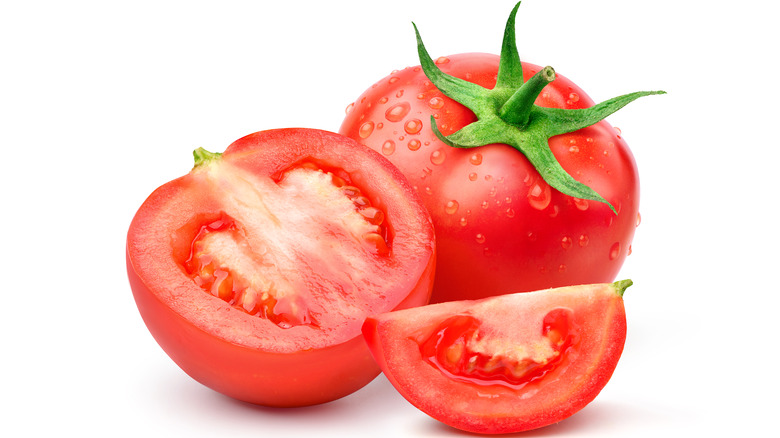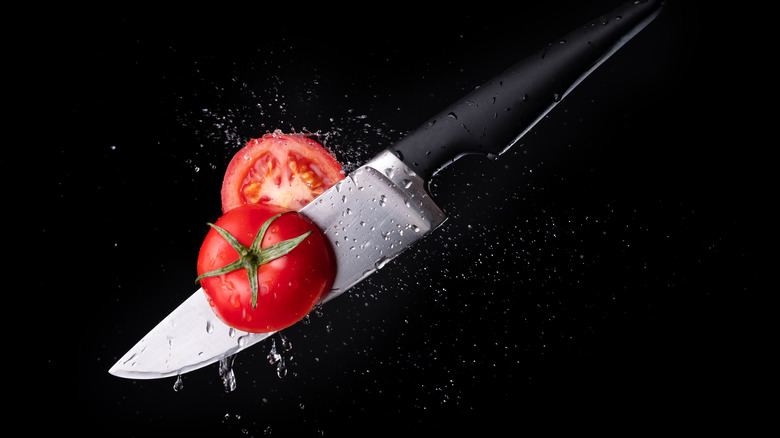The 2 Most Efficient Ways To Seed A Large Tomato
Tomato season is in full swing in these late summer months. Home gardens resemble jungles of tall, green plants studded with colorful orbs of ripe fruit. Farmer's market tables look like jewel boxes of every color and shape of heirloom tomato that you can imagine. For much of the country, fresh, local tomatoes have a short season that foodies, restaurants, and home cooks take full advantage of every year. And the ways to prepare and enjoy this exquisite ingredient are only limited by one's imagination. From the inventive (tomato sandwiches, tomato pies), to the simple (Caprese Salads, BLT's), to the downright delectable (tomato sauces, Panzanellas), there are hundreds of ways to enjoy a good tomato. Not to mention the plethora of ways to can and preserve these treats for those wishing to take summer with them through the long winter months.
While many tomato recipes instruct the reader to use the whole tomato in all its glory, several will suggest removing the seeds (AKA seeding) for various reasons. For instance, some salsa recipes will call for seeded tomatoes because the seeds, which are surrounded by a wet, gelatinous substance, could make the dish too watery, per Bon Appétit. Other times, the seeds take up too much valuable space — think stuffed tomatoes. While seeding tomatoes may seem like a lot of work and extra time, it's often worth it, plus there are a couple of ways to make this otherwise tedious job more efficient.
It's easier than you think
According to The Kitchn, if you need to use the whole tomato and want it to keep its shape, you first want to cut the stem end of the top off. From here, scrape out the inside of the tomato with a melon baller or spoon so that you are left with a hollow shell of the fruit. They are now ready for filling and roasting. If you'll be using chopped tomatoes, begin by cutting off the stem end (just like the first method). Next, cut the tomato in half and then cut each half into wedges (via The Kitchn). This should expose pockets of tomato seeds which you can easily slice out with a paring knife, leaving you the meat of the tomato to use as you wish.
The seeds and pulp can be discarded, or saved for planting if that's your groove. GrowVeg gives a simple outline of how to save your tomato seeds, including instructions on extraction (which you now know how to do!), removing the gel, cleaning, drying, and storing. The choices can be overwhelming so start by researching the top 15 types of tomatoes to find your favorites.

